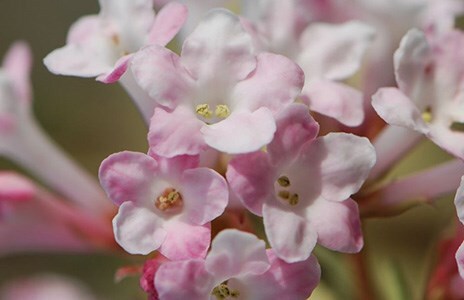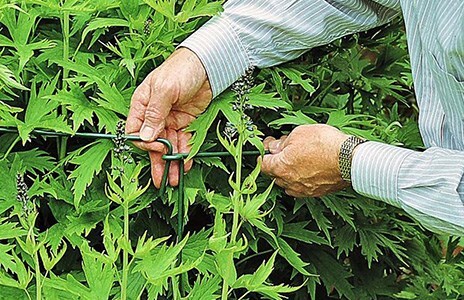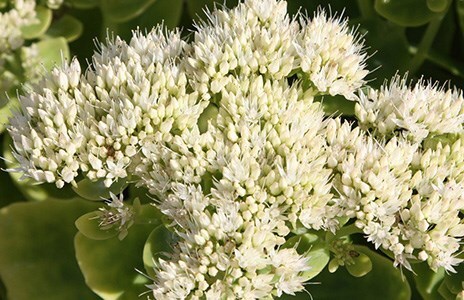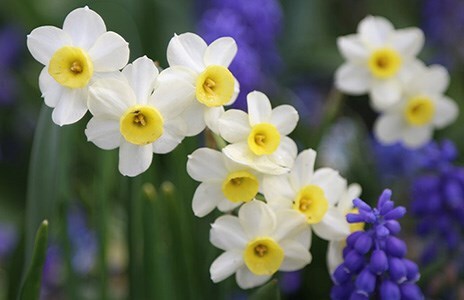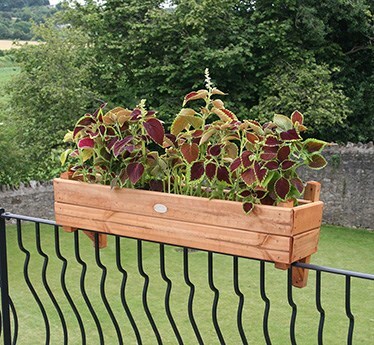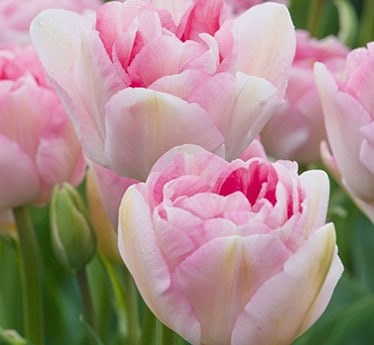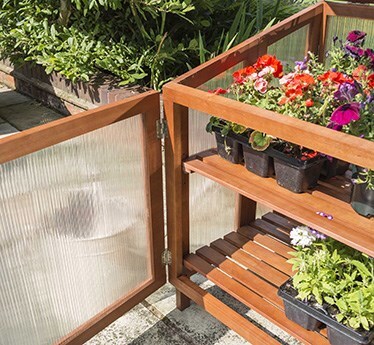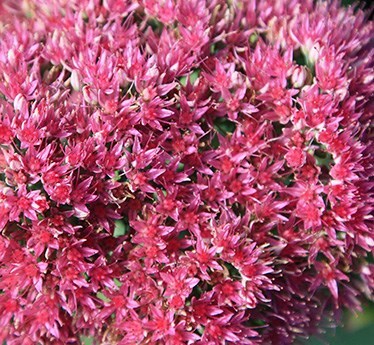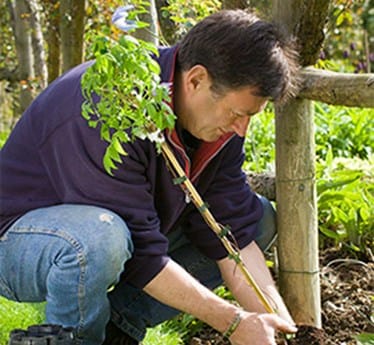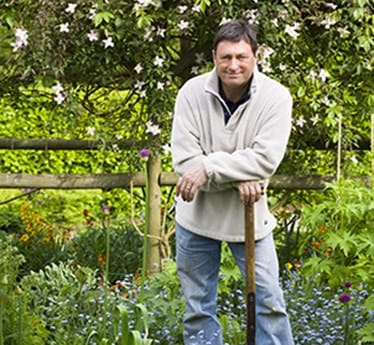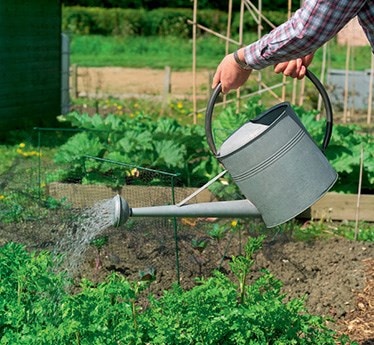Get planting
Autumn is a great time to plant, because the soil is still relatively warm and moist encouraging quick root growth and establishment. All types of hardy perennials, shrubs, trees and climbers can be planted now, although evergreens are best left until late spring to avoid winter scorch.
Some types of deciduous woody plants, including hedging, roses and fruit trees and bushes can be bought bare-root from now and throughout the dormant season. These should be planted as soon as soil conditions allow. Plant each specimen at the same depth as it was in the nursery bed, then mulch the soil around the plant and water well.
Make sure all newly planted trees are well staked and tied securely once planted (see also Planting trees and shrubs).
Plant each specimen at the same depth as it was in the nursery bed,
then mulch the soil around the plant and water well
Protect vulnerable plants
In mild autumns, the first frost may not arrive until the end of November in your garden, so it’s worth taking a good look around to make sure you haven’t forgotten to cover up all the not-so-hardy plants (see also Wrapping up for winter).
The combination of sub-zero temperatures and strong winds is particularly damaging, especially to newly planted specimens. So take steps to protect these too, by erecting a barrier made from windbreak netting attached to stout posts.
Recycle and repair
Recycling is one of the cornerstones to good gardening and at this time of year you can make a big difference by turning garden waste into something useful. Most soft, sappy growth being cleared from borders at this time of year, can be consigned to the compost heap and woody prunings can be chopped up into small pieces and mixed in.
If you have a lot of woody material, you might be better off drying it thoroughly before burning or bagging-up and taking to your local recycling centre, where they can be shredded and turned into compost. Also, clear up any new accumulation of autumn leaves and turn these into crumbly leafmould (see also Making leafmould).
Prevent damage caused by winter gales by giving your garden a security check this month. This will help Install a pond heater and money replacing fence panels and resurrecting or replacing plants damaged by winter storms. Make sure you give all fences, trellis, arches and other garden structures the once-over to ensure they’re well-anchored and in good shape – making essential repairs as you go. Also check tree ties and supports to make sure they are secure.
Prune back or tie in any lanky new growth on climbers to prevent them thrashing about in high winds.
Install a pond heater
If you have a pond stocked with fish it is a good idea to add a pond heater at this time of year to prevent the pond surface freezing over completely – allowing oxygen in and harmful decomposition gases to escape from the water.
View our range of pond plants that flower in november and are wonderful to add to your water features this season.
Christmas bulbs, plant Tulips and lift Dahlias
Bulbs, such as prepared hyacinths and ‘Paper White’ narcissi, planted earlier this year in containers for forcing, should be checked regularly. Once they are showing about 2-3cm of growth, move the pots into a cool, well-lit spot, such as a cool greenhouse, conservatory or spare-room windowsill, to encourage sturdy growth and then into a warm room when flower buds start to show.
Although most spring-flowering bulbs were planted at the end of the summer, mid to late autumn is the best time to plant tulips because then they are less likely to suffer from damaging fungal diseases. Set the bulbs in generous holes about three-times as deep as the bulb, planting them in naturalistic clusters or regimented rows to suit the style of garden you are trying to create. On heavy soils, you might be better off planting them in pots if the soil is too wet to work this month.
Once frost has blackened the foliage of dahlias, they should be dug up and stored in a cool, but frost-free place for the winter months. Cut down the main stems and carefully lift the tubers. Remove as much soil as you can, before placing them upside-down in an airy place undercover to dry out. Remove any remaining soil, then store in boxes after dusting with garden fungicidal powder, packing slightly damp compost around the tubers.
Monthly checklist
- Clear up fallen leaves - especially from lawns, ponds and beds
- Raise containers onto pot feet to prevent waterlogging
- Plant tulip bulbs for a spring display next year
- Plant out winter bedding
- Put out bird food to encourage winter birds into the garden
- Insulate outdoor containers from frost - bubblewrap works well
- Stop winter moth damage to fruit trees using grease bands around the trunks
- Plant roses

